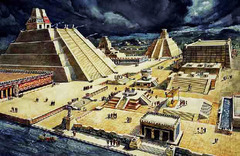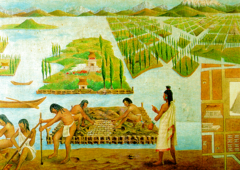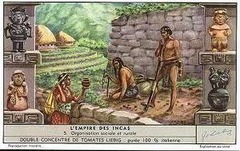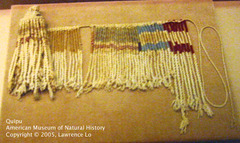AP World History Unit 1 (copy)
1/74
There's no tags or description
Looks like no tags are added yet.
Name | Mastery | Learn | Test | Matching | Spaced |
|---|
No study sessions yet.
75 Terms
Muhammad the Prophet
Arab prophet (570-632 c.e.); founder of religion of Islam. Muslims believe he was God's most recent prophet. The Qur'an (Koran) was revealed to him.
Five Pillars of Islam
Declaration of faith, prayer, alms, fasting, and pilgrimage
Sunni
A branch of Islam whose members acknowledge the first four caliphs as the rightful successors of Muhammad
Muhammad had no rightful heir and that a religious leader should be elected through a vote among the Islamic community's people.
believe that anyone can be Caliph (majority)
Shi'ites
believe that the Caliph must be descended from Ali and have a looser interpretation of the practices proscribed in the Five Pillars of Islam
Caliphate
Area ruled by a caliph
Abbasid Caliphate
(750-1258 CE) The Islamic caliphate established a capital at Baghdad. Focused more on trade and cultural achievements versus expansion.
Baghdad
Capital of Abbasid dynasty located in Iraq
a large and wealthy city where the Abbasid caliphs patronized classical learning and the arts at the House of Wisdom
Islamic Golden Age
period of cultural, economic, and scientific flourishing
Increase in trade and intellectual creativity
Indian system of numbers is brought to Middle East by caravan traders
Geometry, algebra, trigonometry
Great literary tradition emerges in this period
minarets were built atop mosques
scholars made the best world maps (seas and coastlines)
Nasir al-Din al-Tusi
He was a scientist, mathematician, astronomer, philosopher, and theologian. He created ingenious mathematical models for use in astronomy. Provided the model for the movement of the planets that helped to inspire the Copernican model of the solar system. He is often considered the creator of trigonometry as a mathematical discipline
Aisha al-Bajuniyya
female a Sufi master and poet, wrote to allow people a way to get closer with God
House of Wisdom
An academic center for research and translation of foreign texts that was established in Baghdad by Harun al-Rashid
Al-Andalus
A Muslim-ruled region in what is now Spain, established by the Berbers in the eighth century A.D.
pluralistic society, containing prominent Jews, Christians, and Muslims living together under Islamic rule
Turkic peoples
second-largest family of ethnic groups in Russia, settled most of Central Asia; conquered Turkey and the Mongols
Successor States to Abbasids
Seljuk Turks, Mamluk Egypt, Delhi Sultanate
Seljuk Turks
Nomadic Turks from central Asia who conquered Baghdad (Persia) in 1055 ; staunch Sunnis; ruled in name of Abbasid caliphs from mid-11th century, allowed the caliph to remain only as a religious leader. they governed strictly
Mamluk Egypt
non-Arab, ethnically diverse slave-soldiers and freed slaves who were assigned military and administrative duties, serving the ruling Arab dynasties in the Muslim world
Mamluk generals used their power to establish a dynasty that ruled Egypt and Syria from 1250 to 1517
Cairo became the dominant city of the Islamic world in the later Middle Ages
Delhi Sultanate
The first Islamic government established within India from 1206-1520. Controled a small area of northern India and was centered in Delhi.
established by Turkish Muslims who ruled for many years
key role in the extension of Muslim rule across the subcontinent
Mohammad of Ghazni
ruler of the Ghaznavid Empire
turned the city of Ghazni into the rich capital of an extensive empire
He was also the first ruler to carry the title Sultan, signifying his break from the power of the Islamic Caliph
he invaded India at least 17 times, and he led the first major Muslim army to invade India
Ghaznavids
Turkish tribe under Mahmud of Ghazni who moved into northern India in the eleventh century and began a period of greater Islamic influence in India.
Rajput Kingdoms
set of kingdoms in India that arose after the fall of the Gupta dynasty were hundreds of kingdoms ruled by land owning Kshatriyas. wealthy due to trade and a good economy. Hindu beliefs and this is when the practice of sati began, as well as purdah (the separation of women from society).
Sufis
mystical Muslim group that believed they could draw closer to God through prayer, fasting, & simple life
Bhakti movement
Indian movement that attempted to transcend the differences between Hinduism and Islam
Srivijaya Empire
Grew wealthy by taxing trade, included parts of Java, Borneo, and Sumatra, and its capital, Palembang, became a great center of Buddhist learning
A maritime empire that controlled the Sunda strait the strait of Malacca between India and China. HS: control strengthened trade routes to China, India, and even Arabia
Sahel
Belt south of the Sahara where it transitions into savanna across central Africa. It means literally 'coastland' in Arabic.
Stateless Society
A society that is based on the authority of kinship groups rather than on a central government
Kilwa
A city-state found on east African coast(Zenj); fishing limited trade from 800-1000; turned to agriculture, increased trade in pottery and stoneware; major trading center by 14th century, exported gold across the Indian Ocean.
Mogadishu
A Muslim port city in East Africa founded between the eighth and tenth centuries; today it is the capital of Somalia.
Swahili
A Bantu language with Arabic words, spoken along the East African coast
Zenj
Arabic term for the east African or Swahili coast. By the 13th Century, a string of urbanized trading ports had developed and were governed by separate Muslim ruling families. (Mombasa, Mogadishu, Kilwa, Pate etc etc).
Great Zimbabwe
City, now in ruins (in the modern African country of Zimbabwe), whose many stone structures were built between about 1250 and 1450, when it was a trading center and the capital of a large state.
Ethiopia
A Christian kingdom that developed in the highlands of eastern Africa under the dynasty of King Lalaibela; retained Christianity in the face of Muslim expansion elsewhere in Africa
Hausa Kingdoms
1 kingdom divided into 7 states that were connected through kinship, blood, or ethnic ties; had no main central authority but rather ruled each state separate from one another; mainly benefited economically from the trans-Saharan trade network
combined Muslim and pagan traditions
Ghana
First known kingdom in sub-Saharan West Africa between the sixth and thirteenth centuries C.E. Also the modern West African country once known as the Gold Coast. gold and salt trade.
Mali
The kingdom in West Africa that followed the Kingdom of Ghana; its wealth is also based on trans-Saharan trade; this kingdom encouraged the spread of Islam.
Songhay
Successor state to Mali; dominated middle reaches of Niger valley; formed as independent kingdom under a Berber dynasty; capital at Gao; reached imperial status under Sunni Ali
Timbuktu
Mali trading city that became a center of wealth and Islamic learning
Mansa Musa
Ruler of Mali (r.1312-1337 CE) who made a hajj to Mecca; on the way there, he spread enormous amounts of gold showing the wealth of Mali; on the way back, he brought back education and Islamic culture.
Kingdom of Kongo
Kingdom dominating small states along the Congo River that maintained effective, centralized government and a royal currency until the seventeenth century.
Madrasa of Sankore
one of three ancient centers of learning located in Timbuktu
mosque
State systems in the Americas:
Maya city-states, Mexica, Inca, Chaco, Mesa Verde, and Cahokia
Maya city-states
City-State govt., each was ruled by a king and most rulers were men however women could rule if a male heir wasn't old enough (this is good info for ap test as it can connect and compare social and political structure to other societies)
Wars between city states were common
Human sacrifices
No armies so when war erupted, it was the citizens jobs to provide military service
Science and religion linked through astronomy
Offerings to gods were important (similar to the Aztecs, but human sacrifices was more prevalent in Aztec society)
Mexica (Aztecs)
• Originally from northern Mexico, probably hunter gatherers • Relatively new to the valley Mexico, before that they were a nomadic tribe • Warlike; moved into area where state level society • At first weren't accepted • Then hired themselves out as mercenaries; eventually rewarded with, what they called, "bad land" filled with snakes • Guided to the place of the "prickly pear cactus" • Arrived in Tenochtitlan in 1325 • Able to overthrow original rulers with the help of nearby allies; called the triple alliance, collectively referred to as the Aztec Empire • Cortez was able to conquer the Aztecs with a lot of fortunate circumstances and help from a lot of allies that hated the Aztecs • The vast majority of these people died from smallpox • 3 city states formed and expanded into the triple alliance and became the Aztecs
Inca
Largest and most powerful Andean empire. Controlled the Pacific coast of South America from Ecuador to Chile from its capital of Cuzco. Although it had a rich and sophisticated civilization, this American empire did not have a written language.
Chaco
The largest Pueblo community, around 5,000 people belonged here and were quite advanced, including astronomers and other specialists,
Mesa Verde
The largest complex of Anasazi cliff-dwellings in the United States Southwest, built between about AD 1150 and AD 1300
dwellings were easy to defend, offered protection and provided a safe place
Cahokia
The dominant center of an important Mississippi valley mound-building culture, an ancient settlement of southern natives, it served as a trading center
Tenochtitlan
Capital of the Aztec Empire, located on an island in Lake Texcoco. Its population was about 150,000 on the before Spanish conquest. Mexico City was constructed on its ruins.

Chinampas
Raised fields constructed along lake shores in Mesoamerica to increase agricultural yields.

Tambos
waystations used by Incas as inns and storehouses; supply centers for Inca armies; relay points for system of runners used to carry messages.
Mita
Andean labor system based on shared obligations to help kinsmen and work on behalf of the ruler and religious organizations.

Quipu
An arrangement of knotted strings on a cord, used by the Inca to record numerical information.

Feudalism
A political system in which nobles are granted the use of lands that legally belong to their king, in exchange for their loyalty, military service, and protection of the people who live on the land
Manorialism
the peasants worked on small farms in order to produce food which they gave to the nobles who owned the land
Three Estates
1st (Clergy, 1%), 2nd (Nobility 2%), 3rd (Everyone else 97%)
Catholic Church
• central to Medieval Europeans' lives • united Western Europe during Middle Ages
Papacy
The central administration of the Roman Catholic Church, of which the pope is the head.
Universities
Degree-granting institutions of higher learning.
Crusades
A series of holy wars from 1096-1270 AD undertaken by European Christians to free the Holy Land from Muslim rule.
Inquisition
A Roman Catholic tribunal for investigating and prosecuting charges of heresy
Italian Merchant Republics
is a republic (lifetime monarch like figure, popular election (consuls); despite this system the merchants influenced everything)
wealthiest, growth in the economy (crafting and trade)
Hanseatic League
an organization of north German and Scandinavian cities for the purpose of establishing a commercial alliance.
Song China
Dynasty that took over the mandate of heaven far three centuries starting in 976 CE. It ruled an era of many economic and political successes, but it eventually lost northern China to nomadic tribes.
was militarily weak
Neo-Confucianism
The Confucian response to Buddhism by taking Confucian and Buddhist beliefs and combining them into this. However, it is still very much Confucian in belief.
Civil Service Exams
Confucian exam to acquire a position in the Chinese bureaucracy
Silk
a soft, light, and highly valued fabric developed in China
Porcelain
a thin, beautiful pottery invented in China
SteelChampa RiceFootbindingFilial PietyBuddhism - Theravada, Mahayana, Tibetan
Steel
A form of iron that is both durable and flexible.
Champa Rice
Quick-maturing rice that can allow two harvests in one growing season. Originally introduced into Champa from India, it was later sent to China as a tribute gift by the Champa state (as part of the tributary system.)
Footbinding
Practice in Chinese society to mutilate women's feet in order to make them smaller; produced pain and restricted women's movement; made it easier to confine women to the household.
Filial Piety
In Confucian thought, one of the virtues to be cultivated, a love and respect for one's parents and ancestors.
Buddhism types
Theravada, Mahayana, Tibetan
Theravada
the way of the elders
A sect of Buddhism focusing on the strict spiritual discipline originally advocated by the Buddha.
Mahayana
"the Great Vehicle" - The largest of Buddhism's three divisions, prevalent in China, Japan and Korea, encompasses a variety of forms, including those that emphasize devotion and prayer to the Buddhas and bodhisattvas.
Tibetan
This form of Buddhism was most favored by the Mongols